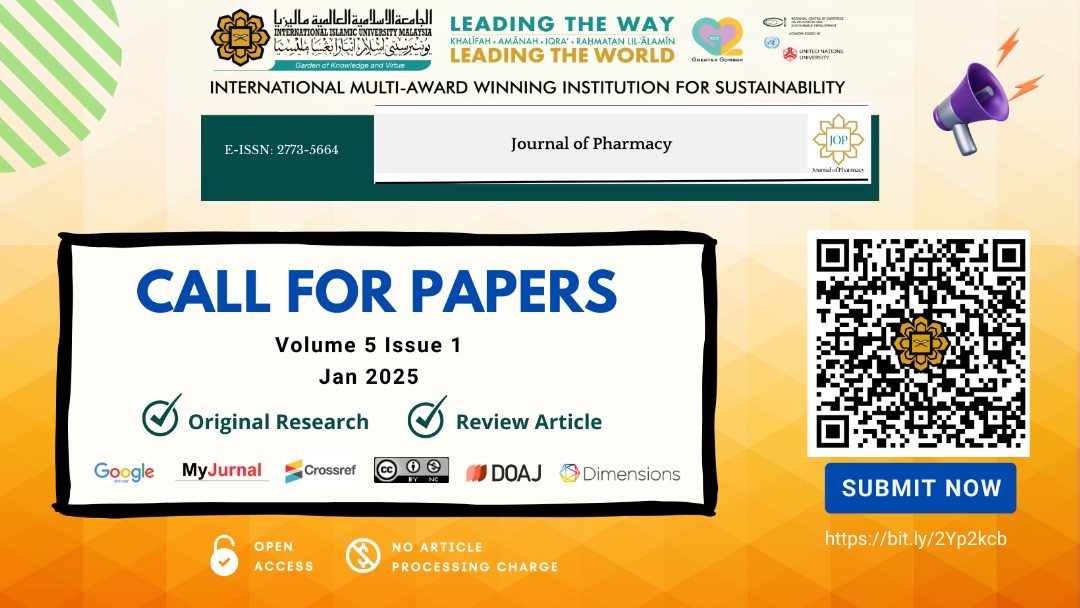Microbial Biotransformation of Anthraquinone: A Review
DOI:
https://doi.org/10.31436/jop.v2i2.123Keywords:
Anthraquinone, biotransformation, microbes, new bioactive compoundsAbstract
Anthraquinones are known to have multiple biological activities such as antioxidant activities, cytotoxicity, antibacterial, antifungal, and antimalarial activities. Despite that, microbial biotransformation of anthraquinones was done to modify or synthesise new anthraquinone derivatives which were technically hard to be chemically synthesised. It is an easy way to discover and synthesise new medicinal compounds having potent pharmacological properties. The synthesis of desired compounds requires less time and less energy. It also promises low cost of production and less environmental impact. Some of the reactions involved were dehalogenation, hydrolysis, oxidation, and glycosylation. The new compounds might possess new biological activities or might exert better pharmacokinetic profile than the parent compound. However, until recently, there was no in-vivo study had been done to evaluate the pharmacodynamics profile of microbial biotransformed anthraquinones. If the in-vitro study succeeds, we may expect a high chance of getting positive result in an in-vivo study. Nonetheless, microbial biotransformation is an alternative way to discover new future drugs alongside synthetic pathway. This review summarises articles related to microbial biotransformation of anthraquinones for the past 20 years.
Downloads
Published
How to Cite
Issue
Section
License
Copyright (c) 2022 IIUM Press

This work is licensed under a Creative Commons Attribution 4.0 International License.
Journal of Pharmacy at https://journals.iium.edu.my/ktn/index.php/jp is licensed under a Creative Commons Attribution 4.0 International License.












